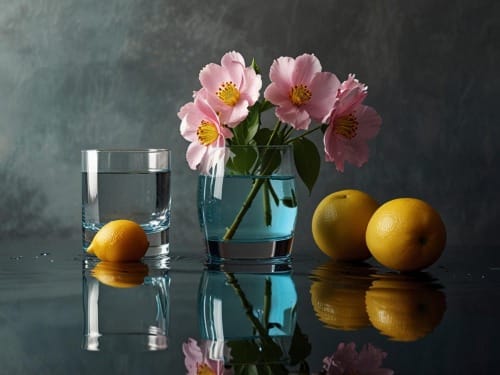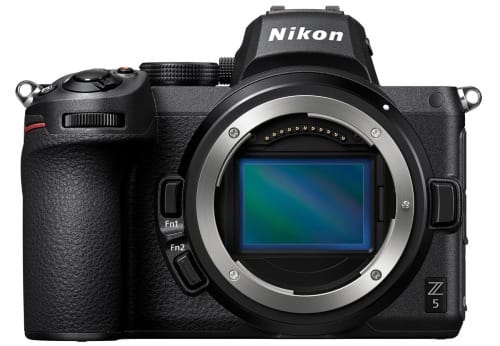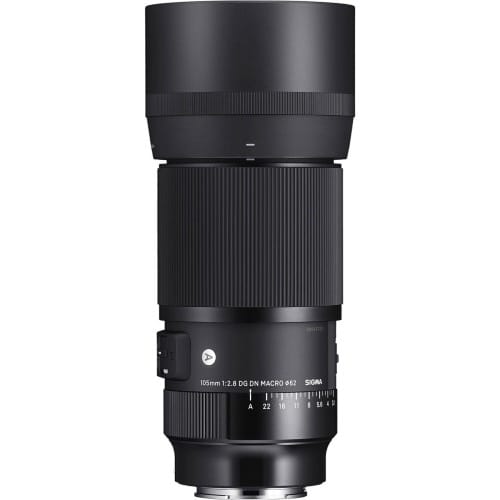Still Life Photography Tips for Stunning Visual Impact

Introduction
The Art and Essence of Still Life Photography
Still life photography is a captivating genre that transforms everyday objects into stunning works of art. It allows photographers to control every element of the frame, from lighting and composition to texture and color, making it an ideal medium for creative expression. By focusing on objects that don’t move, this style emphasizes the beauty in stillness, offering endless opportunities to tell stories through carefully curated scenes.
A well-crafted still life image does more than showcase objects—it evokes emotions, highlights intricate details, and creates a sense of wonder. Whether you're capturing the elegance of a flower arrangement or the simplicity of a vintage teacup, the potential for visual impact lies in your ability to combine artistic vision with technical precision.
In this guide, we’ll explore essential tips for creating compelling still life photography that captivates viewers. From setting up your scene to selecting the right gear and mastering post-processing, each step plays a vital role in achieving stunning results. Whether you're a beginner or an experienced photographer, mastering still life photography will elevate your skills and open new avenues for artistic exploration.
Let’s dive into the techniques and tools that will help you bring your still life visions to life!
Affiliate Disclaimer
This blog post may include links to affiliate sites. If you click on an affiliate link and make a purchase, we may earn a small commission or receive other compensation at no extra cost to you. Please note that many of the links on our site are affiliate links. Our use of these links does not impact the products, services, or websites we recommend to you. This disclaimer covers all forms of communication with you, including our website, email, phone, social media, products, and other platforms.
1. Understanding the Basics of Still Life Photography
What is Still Life Photography?
Still life photography is the art of capturing inanimate objects in a controlled environment to create visually engaging images. Unlike other photography genres that may involve dynamic subjects or unpredictable settings, still life photography focuses on objects that remain stationary, giving the photographer complete control over the composition, lighting, and overall aesthetic.
This genre has roots in classical art, where painters like Caravaggio and Cézanne transformed ordinary objects into masterpieces. Modern still life photography continues this tradition, but with the added flexibility of digital technology, allowing for limitless experimentation with props, textures, and lighting setups.
From commercial product shoots to artistic creations, still life photography spans a wide range of applications. Whether you’re showcasing food, flowers, or everyday objects, the goal is to highlight their essence and beauty in a way that draws the viewer in.

Why Visual Impact Matters
In still life photography, visual impact is key to creating memorable and meaningful images. The way objects are arranged, the interplay of light and shadow, and the choice of colors all work together to elicit emotions and convey a story. Without movement to capture attention, every element in your frame must contribute to a compelling composition.
A strong visual impact not only enhances the aesthetic appeal of your image but also communicates your creative vision effectively. By mastering the basics, photographers can elevate even the simplest objects into striking works of art.
Whether you’re shooting for personal projects or commercial purposes, understanding the fundamentals of still life photography and focusing on its visual storytelling will help you create images that leave a lasting impression.
2. Setting Up Your Still Life Photography Scene
Choosing the Right Background
The background is a crucial element in still life photography, as it sets the tone and enhances the subject without drawing attention away from it. For a clean, professional look, opt for neutral backdrops like solid-colored paper, fabric, or foam boards. These allow your subject to stand out while keeping distractions at bay.
If you're aiming for a more creative or textured appearance, experiment with patterned papers, wooden surfaces, or tiles. Consider how the background complements your subject’s color palette and overall mood. For instance, a rustic wooden table can add warmth to a food photo, while a glossy black surface might suit modern product photography.

Lighting Techniques for Still Life Photography
Lighting is the heart of still life photography, as it shapes your subject and creates mood. Natural light, such as window light, provides a soft and diffused glow, ideal for beginners or those working without additional equipment. Position your setup near a window and use reflectors or whiteboards to bounce light back into the scene for balanced illumination.
Artificial lighting offers more control and consistency. Use continuous lights or strobes paired with softboxes or diffusers to mimic natural light or create dramatic effects. Adjusting light angles can enhance texture and depth, such as using side lighting for a three-dimensional look.
Selecting Props and Arranging Composition
Props can bring life and context to your still life photography. Choose objects that complement your subject and enhance the story you’re trying to tell. Carefully arrange your composition using principles like the rule of thirds, leading lines, and symmetry.
Experiment with layering objects, overlapping elements, or incorporating negative space to add depth. By thoughtfully setting up your scene, you’ll create still life photography that’s both visually impactful and artistically compelling.
3. Camera and Lens Recommendations for Still Life Photography
Recommended Cameras for Still Life Photography
Choosing the right camera is essential for capturing sharp, detailed, and high-quality images in still life photography. The good news is that you don’t need the latest or most expensive camera to get started—what matters is understanding your gear and how to use it effectively.
For beginners, entry-level DSLR or mirrorless cameras like the Canon EOS Rebel T7 or Nikon Z5 are excellent choices. They offer intuitive controls, good resolution, and affordability. These cameras allow you to practice still life photography while learning essential skills such as manual settings and composition.

For more experienced photographers, mid-range options like the Sony Alpha a6400 or Fujifilm X-T50 provide advanced features such as better dynamic range, higher resolution, and excellent color reproduction. These cameras are versatile and well-suited for a variety of still life scenarios, from food photography to fine art compositions.
Professional photographers may prefer high-end models like the Canon EOS R5 or Nikon Z8 for their exceptional image quality, high megapixel counts, and advanced autofocus systems, ensuring precise results even in complex lighting setups.
Recommended Lenses for Still Life Photography
The lens you use significantly influences the outcome of your still life photography. Prime lenses are ideal due to their superior sharpness and wide apertures, which allow for creative control over depth of field. For standard compositions, a 50mm prime lens (e.g., Canon EF 50mm f/1.8 STM or Nikon AF-S 50mm f/1.8G) is an excellent and budget-friendly choice.
For close-up shots and intricate details, macro lenses are indispensable. A lens like the Tamron SP 90mm f/2.8 Macro or the Sigma 105mm f/2.8 Macro provides incredible detail and the ability to focus closely, making them perfect for subjects like jewelry, flowers, or small objects.

Additional Gear to Enhance Still Life Photography
A sturdy tripod is essential to achieve stability and precise framing. It allows you to use slower shutter speeds without motion blur, ensuring crisp images. Pair it with a remote shutter release or intervalometer to eliminate vibrations caused by pressing the shutter button.
Light modifiers such as softboxes, reflectors, and diffusers can help you shape and control your lighting setup, adding depth and drama to your still life compositions. Investing in quality gear tailored to your style will take your still life photography to the next level.
4. Post-Processing for Stunning Visual Impact
Editing Software Options
Post-processing is a vital step in still life photography, allowing you to enhance details, refine colors, and bring your artistic vision to life. Popular editing tools like Adobe Lightroom and Photoshop provide robust features to elevate your images. Lightroom is perfect for global adjustments such as exposure, contrast, and color correction. It also offers a straightforward interface for batch processing multiple images efficiently.
For more advanced edits, Photoshop allows for precise adjustments, such as retouching, cloning, and creating composite images. Free alternatives like GIMP or Darktable are also great for beginners or budget-conscious photographers who want to explore post-processing without financial investment.
Enhancing Details and Textures
In still life photography, textures and fine details are often the focal points. Use sharpening tools in your editing software to bring out the intricate elements of your subjects, like the veins of a leaf or the grains of a wooden surface. Clarity adjustments can add depth and make textures more pronounced, but avoid overdoing it, as it may introduce unwanted artifacts.
Color Grading for a Professional Look
Color plays a significant role in the mood and impact of still life photography. Experiment with color grading to match the tone and theme of your image. Warm tones can evoke feelings of comfort and nostalgia, while cooler tones create a calm and minimalist vibe.
You can use split toning tools to adjust highlights and shadows independently, creating a balanced yet dynamic look. Creative filters, available in most editing programs, can also help you experiment with unique effects and find your signature style.
By mastering post-processing techniques, you can transform your still life photography from good to extraordinary, ensuring every image stands out and leaves a lasting impression.
5. Creative Inspiration for Still Life Photography
Exploring Themes and Concepts
In still life photography, creativity often begins with a theme or concept that gives your work direction and purpose. Themes can range from seasonal motifs, like autumn leaves or holiday ornaments, to more abstract ideas, such as symmetry, contrast, or nostalgia. Identifying a central idea not only helps you select props and backgrounds but also ensures a cohesive final image that resonates with your audience.
Storytelling is another powerful approach in still life photography. Arrange objects that evoke memories or tell a narrative. For instance, a vintage camera paired with faded photographs and an old notebook might suggest themes of time and nostalgia. By carefully curating your scene, you can create images that provoke thought and spark imagination.
Experimenting with Techniques
Still life photography thrives on experimentation, offering endless opportunities to play with techniques and styles. Try using reflections by incorporating mirrors or glass surfaces, creating a sense of depth and intrigue. Shadows can also add drama and dimensionality—experiment with different light angles to craft unique shadow patterns that enhance your composition.
Layering objects at various heights and distances adds complexity and visual interest to your frame. You can use books, platforms, or even natural elements like branches to achieve a dynamic arrangement. Negative space is another tool that can emphasize your subject, creating a minimalist aesthetic that draws the viewer's focus.
Staying Inspired and Consistent
Creative inspiration is a constant journey. Study the work of other still life photographers or painters to find new ideas and techniques. Revisit everyday objects with a fresh perspective, looking for hidden beauty in simplicity. With dedication and imagination, you can elevate your still life photography to become a true expression of your artistic vision.
Conclusion
Embrace the Art of Still Life Photography
Still life photography is more than just capturing inanimate objects—it’s about creating images that tell a story, evoke emotion, and showcase the beauty in stillness. By mastering the foundational techniques and embracing your creativity, you can transform even the simplest subjects into compelling works of art. Whether it’s experimenting with lighting, perfecting your composition, or post-processing your images to highlight every detail, each step contributes to the impact of your final photograph.
This guide has walked you through essential tips for setting up your scene, choosing the right gear, and exploring creative techniques to bring your vision to life. The beauty of still life photography lies in its versatility and accessibility—whether you’re working in a studio or using items from around your home, the potential for artistic expression is limitless.
As you continue to practice and refine your skills, don’t be afraid to push boundaries and experiment with new ideas. Inspiration can be found everywhere, and your unique perspective is what will set your work apart. Still life photography offers endless opportunities to grow as an artist, so pick up your camera, let your imagination take the lead, and create images that truly stand out.
Top 7 FAQs for Still Life Photography Tips for Stunning Visual Impact
- What is still life photography?
Still life photography focuses on capturing inanimate objects in a controlled environment to create artistic and visually appealing images. - What equipment do I need for still life photography?
A camera, a versatile lens (like a 50mm prime or macro lens), a tripod, and basic lighting gear like reflectors or softboxes are ideal. - How do I choose the right lighting for still life photography?
Use natural light for soft, diffused effects or artificial lights for precise control. Adjust light angles to emphasize texture and depth. - What are some good subjects for still life photography?
Everyday items like flowers, food, books, or antiques work well. The key is to arrange them creatively and tell a story. - How can I improve the composition of my still life images?
Use techniques like the rule of thirds, leading lines, and symmetry. Experiment with layering and negative space for added depth. - What are the best lenses for still life photography?
Prime lenses like a 50mm for sharpness and macro lenses for detailed close-ups are excellent choices. - How important is post-processing in still life photography?
Post-processing enhances details, adjusts colors, and refines textures, helping you achieve a polished and professional look.
Thank you for visiting our site and being part of this journey with us! We rely on the generous support of visitors like you to continue providing high-quality. Your donation, no matter the size, helps us maintain the website and create more valuable resources for everyone.





